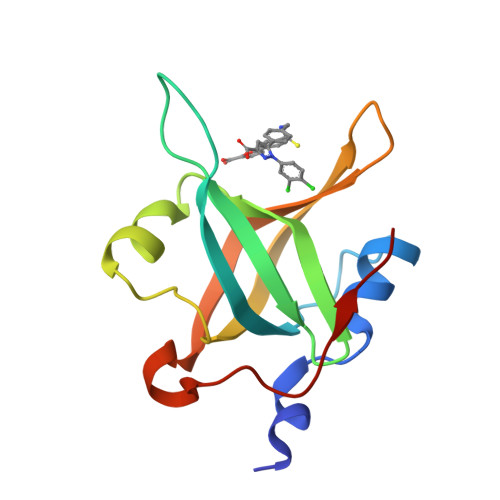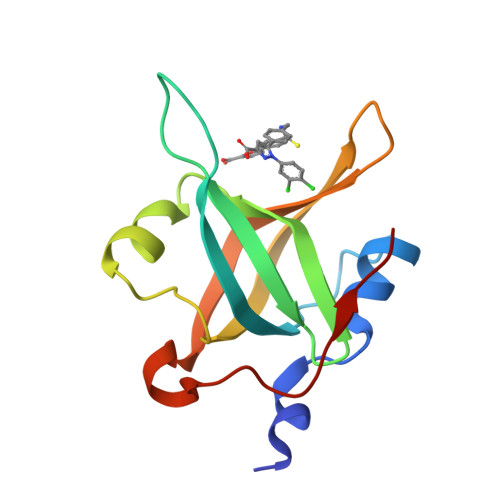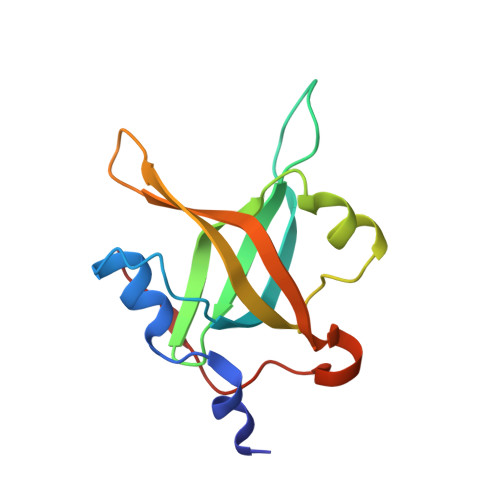Diphenylpyrazoles as replication protein a inhibitors.
Waterson, A.G., Kennedy, J.P., Patrone, J.D., Pelz, N.F., Feldkamp, M.D., Frank, A.O., Vangamudi, B., Souza-Fagundes, E.M., Rossanese, O.W., Chazin, W.J., Fesik, S.W.(2015) ACS Med Chem Lett 6: 140-145
- PubMed: 25699140
- DOI: https://doi.org/10.1021/ml5003629
- Primary Citation of Related Structures:
4R4C, 4R4I, 4R4O, 4R4Q, 4R4T - PubMed Abstract:
Replication Protein A is the primary eukaryotic ssDNA binding protein that has a central role in initiating the cellular response to DNA damage. RPA recruits multiple proteins to sites of DNA damage via the N-terminal domain of the 70 kDa subunit (RPA70N). Here we describe the optimization of a diphenylpyrazole carboxylic acid series of inhibitors of these RPA-protein interactions. We evaluated substituents on the aromatic rings as well as the type and geometry of the linkers used to combine fragments, ultimately leading to submicromolar inhibitors of RPA70N protein-protein interactions.
Organizational Affiliation:
Department of Biochemistry, Department of Pharmacology, Vanderbilt University School of Medicine, and Department of Chemistry, Vanderbilt University , Nashville, Tennessee 37232, United States.

















